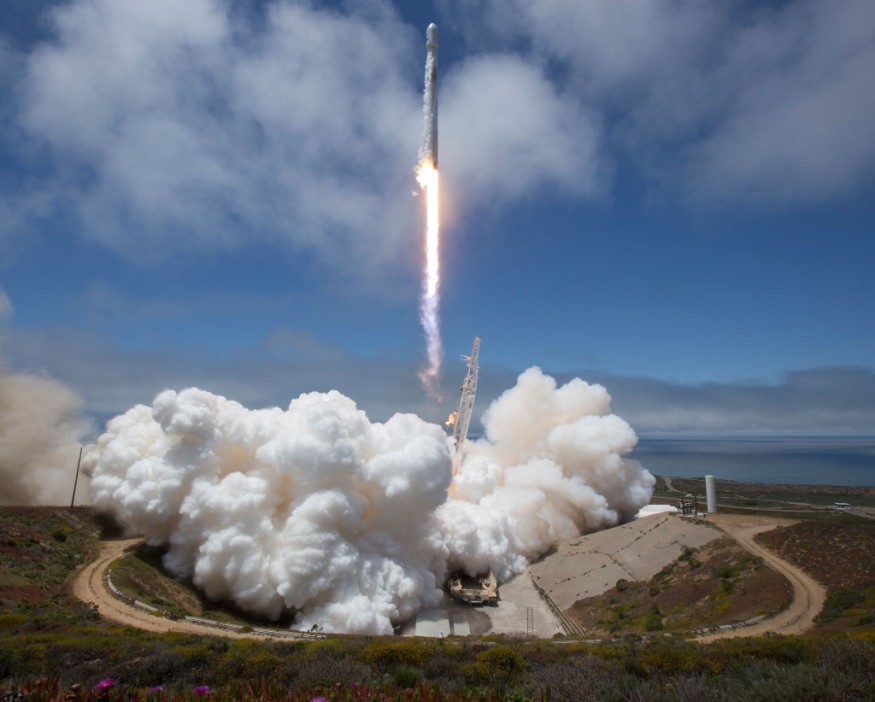California-based rocket maker SpaceX successfully deployed 60 new Starlink satellite fleet into orbit on Saturday, October 24. Elon Musk's launch capped the company's task with a safe rocket landing at the shore after an on-time liftoff.
A previously two-stage Falcon 9 rocket lifted off from Space Launch Complex 40 for SpaceX's ever-expanding mega constellation at 11:31 a.m. EDT at Cape Canaveral Air Force Base.
The first stage of the Falcon 9 booster returned to Earth roughly 9 minutes after liftoff, landing on one of SpaceX's drone ships in the Atlantic Ocean. One of two booster catchers in the company's fleet of rescue vessels is the huge vehicle, Just Read the Directions.

SpaceX planned to fly this mission on October 22. However, the company decided to postpone the launch to explore the rocket's technical problems.
With weather officials at the 45th Space Wing expecting a 60 percent probability of favorable lift conditions, the two-day pause saw a small change in the outlook. (Cumulus clouds are a key concern.)
Yet Mother Nature cooperated, with the Falcon 9 growing at liftoff into a largely bright blue sky. In the Atlantic, according to the SpaceX video feed, the booster's landing took place beneath a crystal clear sky.
SpaceX called upon one of the newest members of its rocket fleet, B1060, for this task to further extend its Starlink satellite fleet. First, the booster bore an advanced GPS satellite for the United States.
SpaceX Missile Rally
Saturday's flight marks SpaceX's 19th mission in 2020 and the 96th Falcon 9 flight to date. The latest launch puts the organization only two launches short of surpassing the previous launch milestone of 21 flights, set in 2018. SpaceX is on track for a banner year.
SpaceX's fleet of flight-proven boosters makes this feat possible. There are already five seasoned boosters in SpaceX, and three entirely new ones designated for future flights. While it tries to move on an unforeseen problem during a recent launch attempt, the organization is just releasing veteran boosters.
On October 2, SpaceX aborted the launch seconds before an advanced GPS satellite's scheduled liftoff. Data analysis showed an engine anomaly that culminated in SpaceX withdrawing two engines from the booster and sending them back for further research to the company's Texas-based facilities.
SpaceX is already repairing one engine on two other missions expected to happen during the next few weeks over warning.
Kathy Lueders, NASA's human space flight manager, tweeted on Wednesday night that one engine was being replaced on the booster for the forthcoming SpaceX Crew-1 astronaut flight and the Sentinel 6 ocean-mapping mission. Like the GPS mission, both of these flights are scheduled to fly in November and feature brand new boosters. It is not anticipated that the fixes would influence launch dates, Lueders said.
We are making a lot of good progress with @SpaceX on engine testing to better understand the unexpected behavior observed during a recent non-NASA launch. (1/5) pic.twitter.com/vhtj8UQVxb — Kathy Lueders (@KathyLueders) October 21, 2020
SpaceX currently focuses on its Starlink constellation, depending on flight-proven rockets to start filling the scheduled range of 1,440. New boosters, however, seem to be interested in the engine crisis. If all goes as expected with the engine upgrades, the next few weeks may be jam-packed with launches as SpaceX has a back-log of missions to get through.
A Starlink Mega Constellation evolves
As a way to compensate for its potential Mars projects, SpaceX introduced its Starlink internet connection. Like its Starship project currently under construction, the organization requires costly hardware and more sophisticated rockets and spacecraft. To that end, the organization uses a flat-panel satellite fleet to transmit high-speed yet low-latency internet coverage for those living in rural and remote areas.
Elon Musk, CEO of SpaceX, predicted that the Starlink service could produce up to $ 30 billion annually, but no real pricing has yet been announced. The burgeoning internet service conducts a private beta-testing program, with business personnel placing it through its paces.
Preliminary results are encouraging, suggesting that several high definition sources will be enabled at once by the Starlink network. The fund would encourage broadband providers to compete for the opportunity to use the money to deploy broadband coverage in underserved areas, providing preference to tribal lands and regions that already lack at least 10 Mbps Internet download speeds. The FCC reports that for the first round of the sale, about 6 million places will be eligible.
#TheFutureIsNowEC! We are joining the @SpaceX Starlink satellite constellation to provide high-speed, low-latency Internet to students. https://t.co/5guLw1YpmT @chiefsforchange #PermianStrategicPartnership pic.twitter.com/Tf72QHoWl4 — Ector County ISD (@EctorCountyISD) October 20, 2020
ALSO READ: SpaceX Wins Pentagon Contract for Missile Tracking Satellites
Check out more news and information on Space and Technology in Science Times.











